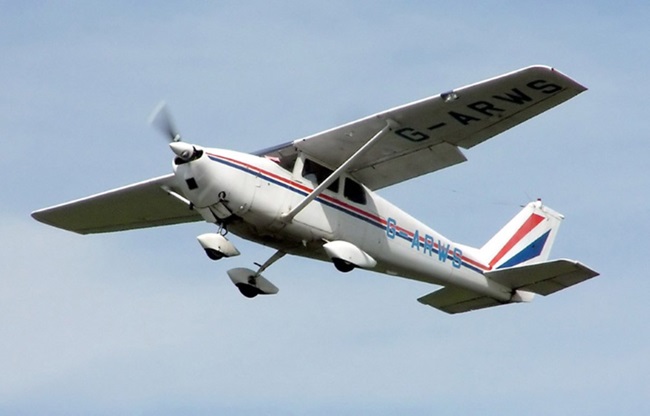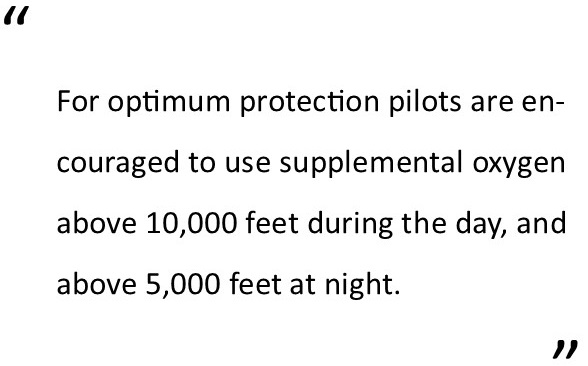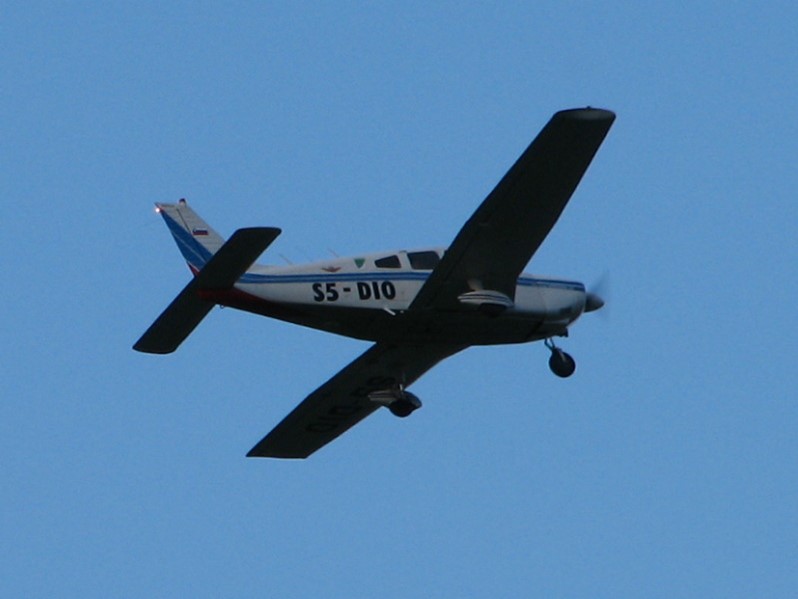By Paul Wiley
Hypoxia is a state of oxygen deficiency in the body sufficient to impair functions of the brain and other organs, e.g., your eyes, and especially the part of your eyes responsible for night vision acuity. Since the concentration of oxygen in the atmosphere remains constant at about 21% from the ground out to space, the effects of hypoxia are due solely to the reduced atmospheric pressure as altitude increases.
In a healthy individual the effects of hypoxia do not usually occur below 12,000 feet MSL. However, there are several factors which can lower the altitude at which pilots will experience hypoxia. These factors include smoking, exhaust fumes in the cockpit, lowered hemoglobin (anemia), and certain medications. Small amounts of alcohol and low doses of certain drugs, such as antihistamines, tranquilizers, sedatives, and analgesics can, through their depressant action, make the brain more susceptible to hypoxia. The Aeronautical Information Manual (AIM) states: “For optimum protection pilots are encouraged to use supplemental oxygen above 10,000 feet during the day, and above 5,000 feet at night.”

Dr. Brent Blue recently wrote an article for the AOPA Pilot magazine (October 2023) where he discusses hypoxia and the benefits of using a digital pulse oximeter when flying to detect early symptoms of hypoxia. Digital pulse oximeters are now available over the counter and are relatively inexpensive - less than $25 for most models available online from Amazon. Dr. Blue recommends using a model that is made in the USA as these models tend to be more accurate and reliable than models made in China. I have used a digital pulse oximeter when flying at altitude for several years now (thanks to a recommendation from my Aviation Medical Examiner) and find it very helpful. Dr. Blue states that normal pulse oximetry readings at sea level should be between 95 and 100 percent for a healthy individual. If you live at high elevation, this normal reading will be lower. For example: at 6,000 feet elevation the normal reading will be between 90 and 95 percent. Use of supplemental oxygen is recommended at readings below 90%.

If your airplane has a supplemental oxygen system, follow the instructions in your Approved Flight Manual or Owner’s Manual. If your airplane does not include an oxygen system, supplemental oxygen can be purchased online. For example: Boost Oxygen is one such model available on Amazon for about $45 for a package of 3 10-liter bottles. Each of the very light (10 grams) bottles provides about 200 one-second inhalations. It is interesting to check your percentage of oxygen saturation using a pulse oximeter and then take 2 or 3 one second inhalations of oxygen and watch your oxygen saturation increase to 98 or 99%. Dr. Blue states that: “it is entertaining to have pilots fly at night around 8,000 feet without oxygen and then have them put on oxygen, thus oxygenating the retina.” He says this causes both the cockpit lights and lights on the ground to brighten like a rheostat has been turned up.

Similar to fatigue, hypoxia is insidious, often difficult to recognize, and can “sneak up on you,” and before you realize it, your alertness and performance has been degraded and safety may be compromised. This is especially true at night when the effects of hypoxia can adversely affect night vision at altitudes as low as 5,000 feet. One way to recognize your symptoms of hypoxia is to participate in aviation physiology training using an altitude chamber. In the Phoenix area aviation physiology training is available at Arizona State University’s Polytechnic school at Gateway airport. See Poly.engineering.ASU.edu where a search for “altitude chamber” will take you to a page with details of the training provided and how to enroll. I highly recommend this training for any pilot, but especially for pilots flying an airplane capable of flight above 15,000 MSL.
References:
Aeronautical Information Manual (AIM) chapter 8 - Medical Facts for Pilots
AOPA Pilot Magazine (October 2023) page 30 - Flight MD by Dr. Brent Blue
